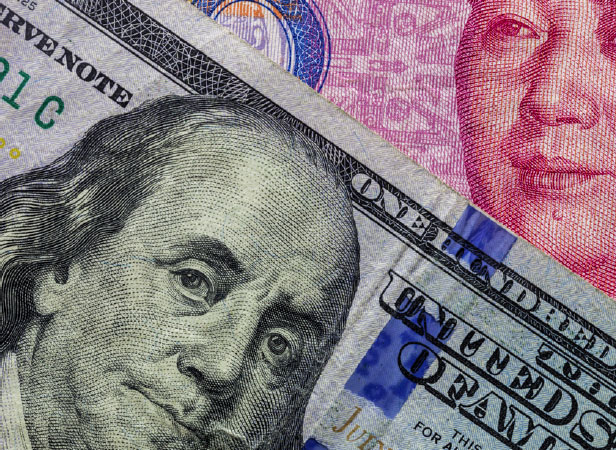News August 23, 2018
U.S. Hits China With Second Round of Tariffs
China retaliated with a tariff on certain American goods.
In a Nutshell:
- The 25% U.S. tariffs target nearly 300 items, including tractors, plastic tubes and measuring equipment.
- The tariff battle could prove challenging for the U.S. promotional products industry.
The United States has launched the second round of tariffs in its trade war with China, officially taxing an additional $16 billion worth of Chinese goods. U.S. customs officers started imposing the 25% tariffs at 12:01 a.m. on Thursday, August 23, in the midst of trade negotiations between the two countries. As it has done in the past, China retaliated with a 25% tariff on an equal amount of American goods.
U.S. Trade Representative Robert Lighthizer announced that the nearly 300 items targeted are industrial goods such as tractors, plastic tubes and measuring equipment. China’s tariff will hit vehicles, fuels, plastic products and recyclables. A total of $50 billion of goods on each side are slated to be taxed.
Our Country was built on Tariffs, and Tariffs are now leading us to great new Trade Deals - as opposed to the horrible and unfair Trade Deals that I inherited as your President. Other Countries should not be allowed to come in and steal the wealth of our great U.S.A. No longer!
— Donald J. Trump (@realDonaldTrump) August 15, 2018
A prolonged trade war between the U.S. and China could prove challenging for the promotional products market, as prices on imported Chinese-made goods would increase. Industry firms – as well as retailers – would then have to decide whether to take a hit in their margins or pass the added cost on to buyers.
In 2017, a total of $506 billion in goods were imported from China, meaning the tariffs represent over 10% of the total annual value of Chinese imports, noted Joshua White, Top 40 distributor BAMKO’s (asi/131431) general counsel and senior vice president of strategic partnerships, in a white paper.

“This is a highly fluid situation making it difficult to accurately predict what comes next,” White wrote. “The Trump administration’s follow-through on previous threats leads one to conclude that it is serious about its intent to obtain meaningful concessions to limit China’s purported theft of American intellectual property. Should tariffs be imposed, consumers, retailers and manufacturers will all feel the pinch. The impact would disrupt global supply chains, raise input costs and consumer prices, and slow economic growth. Expect to see the financial impact start hitting consumers and retailers in the 2018 holiday season.”
Despite the current talks between delegations from the U.S. Treasury Department and China’s Ministry of Finance, President Donald Trump doesn’t expect much progress to be made. In an interview with Reuters, Trump said resolving the trade dispute with China will “take time because China’s done too well for too long, and they’ve become spoiled. They dealt with people that, frankly, didn’t know what they were doing, to allow us to get into this position.”
Furthermore, Trump has threatened to levy a 25% tariff on an additional $200 billion worth of Chinese imports. The U.S. Trade Representative’s Office is holding hearings this week on what would be a third round of tariffs imposed on Chinese goods this year, CNN reported.
As Trump's tariffs begin to bite, China agrees to resume trade talks with US next week. It even signals willingness to make some concessions. When a nation pursues an accommodating approach toward China, like successive Indian governments, an emboldened China only ups the ante.
— Brahma Chellaney (@Chellaney) August 17, 2018
The first round of tariffs went into effect in July, when the U.S. officially levied 25% taxes on $34 billion worth of Chinese goods. Beijing quickly retaliated with tariffs on $34 billion worth of imported U.S. goods. President Trump has pushed for these tariffs as part of an intellectual property investigation of Chinese high-technology companies.
This is not "tough negotiating." This is not being "pro-American on trade."
— Renee Hoagenson 2018 🌊 (@ReneeHoagenson) August 20, 2018
The current administration is sabotaging our economy and has no idea what they are doing!. #tariffs #jobs #TradeWar https://t.co/8VrZqG2gYe
The International Monetary Fund (IMF) estimates the conflict between the U.S. and China would cost the world around 0.5% in gross domestic product, based on current measures and “in the worst case scenario.” The U.S. would be harder hit than other countries because a larger share of its exports will be subject to the punitive levies, according to the IMF’s calculations.
Great news that US and China will soon resume trade talks. If all tariff/trade disputes magically disappeared, Dow would go up 5,000 points—that’s how strong US economy is.
— Steve Forbes (@SteveForbesCEO) August 16, 2018
